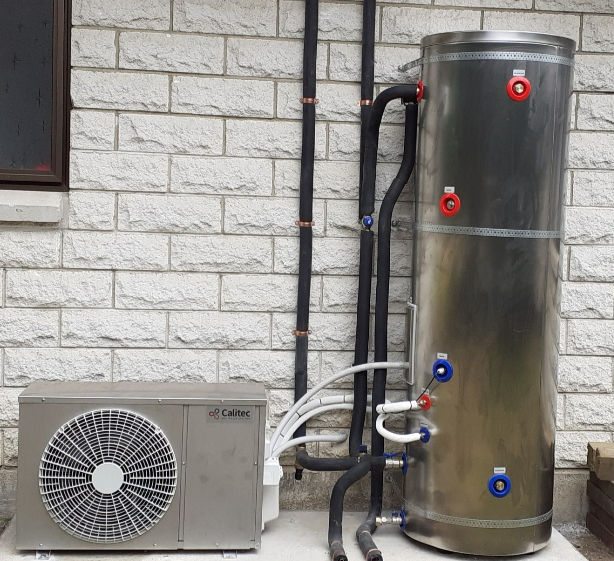Different models and systems of heat pump water heaters in New Zealand
- Calitec Team
- Nov 25, 2024
- 2 min read
Choosing the right heat pump hot water system for your home
When it comes to heat pump hot water systems, making the right choice can significantly impact your home’s energy efficiency, water heating performance, and long-term power costs. However, with so many different models and sizes available, understanding the benefits and differences between them can be overwhelming.
Here, we’ll simplify the process by breaking down the main types of systems, their benefits, and what to keep in mind when selecting the right system for your needs.

All-in-One Systems
All-in-one systems combine the hot water cylinder with the heat pump unit mounted on top. While they are compact and convenient, these systems often have limited heating power, which may lead to longer recovery times, especially during winter when ambient temperatures drop.
Considerations:
• Can the heat pump maintain output during colder weather?
• Does the system heat water to 60°C without relying on an electric heater?
• Is the heat pump replaceable, or does the entire system need to be replaced if it fails?
• Are warranty terms sufficient to ensure a good return on investment?
Refrigerant Cycling Split Systems:
These systems use a heat pump outdoor unit connected to a hot water cylinder via refrigerant pipes. They offer high efficiency with minimal heat loss and flexible installation options, making them ideal for homes looking to keep components discreetly placed.
Key Benefits:
• Indoor or outdoor cylinder placement flexibility.
• The outdoor unit can be positioned out of sight.
• If the heat pump reaches the end of its life, it can be replaced separately.
Consideration:
• Installation costs may be slightly higher, as a qualified heat pump installer is required.
Mono-Block Water Circulation Systems:
Traditional Mono-Block Systems:
Older mono-block systems often used refrigerants limited to 55°C, requiring electric heaters to meet the 60°C safety standard. These systems also had restrictions on pipe length due to heat loss.
R290 Mono-Block Systems:
With advancements in refrigerants like R290, many issues with older systems have been resolved. R290 systems can heat water up to 75°C, eliminating the need for electric boosting. They also overcome pipe length limitations, offering more installation flexibility.
CO₂ Mono-Block Systems
The higher working pressures often make them more expensive than R290 systems with similar performance.
Key questions for all Mono-Block systems:
• Can the system heat water without requiring an electric boost?
• How does the system's performance vary with ambient temperatures?
Making your decision
At Calitec, we understand that every home and household has unique requirements. Our WH-70 mono-block water heater uses R290 refrigerant, making it one of the most efficient systems on the market. Our KP-50 system is a refrigerant cycling system that offers great flexibility. Both models are designed with efficiency, durability, and environmental sustainability in mind. By considering factors such as household size, climate, and installation preferences, we can help you find the perfect fit.
For further reading, check out these resources:

Commentaires